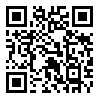مجله رویش روانشناسی از دادن گواهیهای کاغذی معذور است. لطفا تقاضا نکنید. همه گواهی ها در صفحه شخصی کاربران موجود است.
year 10, Issue 10 (Spring 2022 2022)
Rooyesh 2022, 10(10): 231-240 |
Back to browse issues page
Download citation:
BibTeX | RIS | EndNote | Medlars | ProCite | Reference Manager | RefWorks
Send citation to:



BibTeX | RIS | EndNote | Medlars | ProCite | Reference Manager | RefWorks
Send citation to:
Sareshtedaranpour Z, Namdarpour F. The Effectiveness of Schema Therapy on Rumination and in Women with Marital Conflicts in Isfahan. Rooyesh 2022; 10 (10) :231-240
URL: http://frooyesh.ir/article-1-2955-en.html
URL: http://frooyesh.ir/article-1-2955-en.html
1- Master of Family Psychology, Faculty of Humanities, KhomeiniShahr Branch, Islamic Azad University, Isfahan, Iran.
2- Department of Counseling, Khomeinishahr Branch, Islamic Azad University, Khomeinishahr/ Isfahan, Iran. , f.namdarpour@yahoo.com
2- Department of Counseling, Khomeinishahr Branch, Islamic Azad University, Khomeinishahr/ Isfahan, Iran. , f.namdarpour@yahoo.com
Abstract: (1452 Views)
The aim of this study was to determine the effectiveness of schema therapy on the rumination of women with marital conflicts in Isfahan. The present study was a single-subject design. The statistical population of the study was all women with marital conflict who referred to the Crisis Intervention Center of the Welfare Organization, from which 3 people were selected by convenience sampling. Before the start of the treatment sessions, 2 sessions were held as a baseline for each participant, then the participants underwent Yang schema therapy for 14 sessions. After one month, two follow-up sessions were performed one week apart. The instruments used in this study were Barati and Sanai (MCQ) Marital Conflict Questionnaire (1996), Nolen-Hooksma and Moro (RRS) Ruminant Questionnaire (1991), and Schema Therapy Protocol. For data analysis, visual analysis method, graphs and indicators of trend, stability, percentage of non-overlapping data (PND), and percentage of overlapping data (POD) were used. The results showed that schema therapy was effective on rumination of women with marital conflict. Regarding the rumination variable, except for the second case, in which the result of treatment showed a very good effect (PND = 100%), in the other two treatments, it had a relatively good effect (70%
Type of Article: Research |
Subject:
Family Psychology
Received: 2021/06/13 | Revised: 2022/04/6 | Accepted: 2021/09/14 | ePublished: 2022/01/30
Received: 2021/06/13 | Revised: 2022/04/6 | Accepted: 2021/09/14 | ePublished: 2022/01/30
Send email to the article author
| Rights and permissions | |
 |
This work is licensed under a Creative Commons Attribution-NonCommercial 4.0 International License. |






